Teeth grinding (bruxism) - therapy with a grinding splint
A bite splint (also known as a grinding splint or dental splint) is an important therapeutic tool for preventing unconscious grinding of the teeth at night and the resulting health problems and damage.
- Customized grinding splint
- State-of-the-art technology
- Family practice for 40 years, now in its 2nd generation
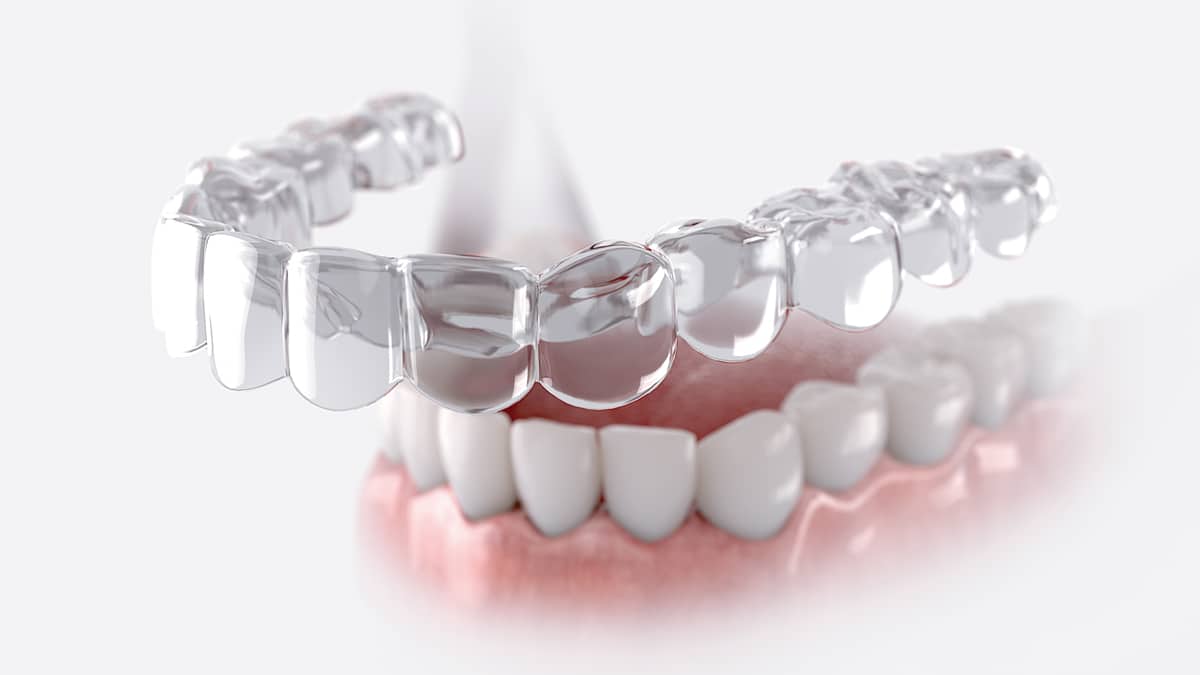
Teeth grinding is widespread
At least one in two people in the western world chew through their worries and stress at night, usually unconsciously.
This involves clenching the teeth or grinding movements between the upper and lower jaw.
The chewing surfaces of the teeth are among those that suffer.
Problems and worries are processed at night in particular.
These psychological stresses and processes often lead to tension in the muscles.
The chewing muscles – which are normally responsible for grinding food with the help of the teeth – become tense and teeth rub against each other.
The patient himself is usually unaware of this.
It is most likely to be the partners who are disturbed and woken up by the loud grinding of the teeth during sleep.
During an examination, the dentist diagnoses bruxism, for example, on the basis of the cusp structure of the chewing surfaces of the teeth.
In 40% of cases, however, people clench their teeth silently so that their partners don’t even notice.
Dental splints or relaxation splints provide a remedy in the first steps.
Treatment
A custom-made grinding splint for you
| Treatment duration | 20 minutes |
| Dates | 1-2 dates |
| Production | DR. HAGER | dental laboratory |
| Material | PMMA plastic |
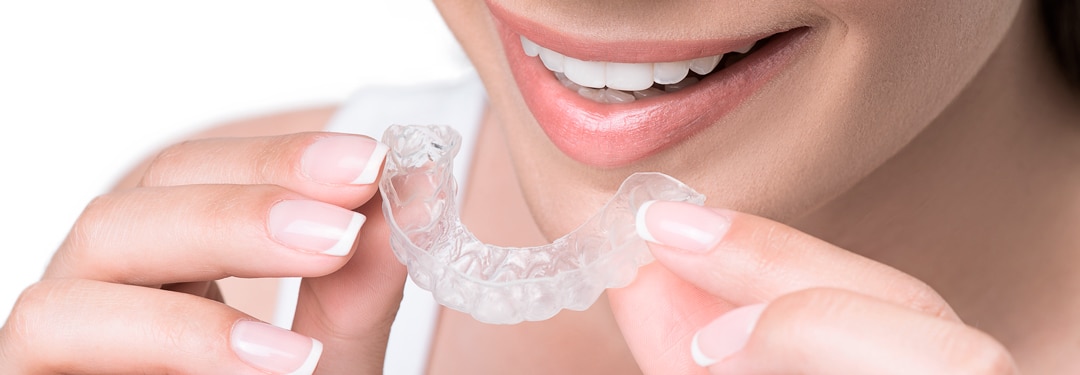

“Every day we deal with patients in our practice who report tension, stress, headaches and mental tension.
As dentists, we are able to diagnose these problems quickly and are happy to get the symptoms under control with customized plastic splints, among other things.”
Dr. Marion Auer
Treatment procedure for teeth grinding
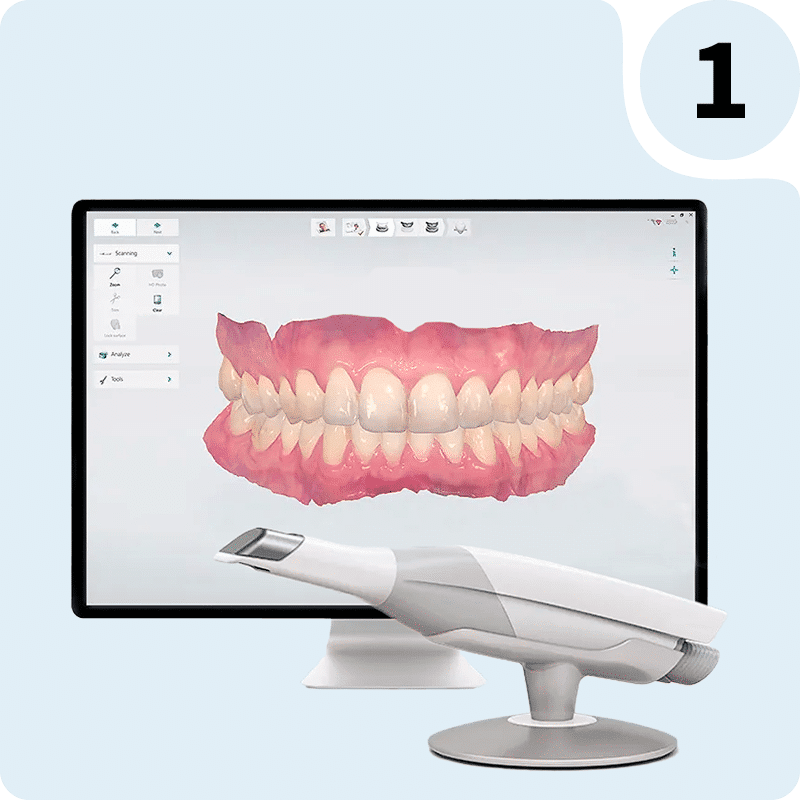
Examination and impression taking
During the first examination, a definitive diagnosis is made.
This step is crucial in order to assess the severity of the bruxism and plan suitable measures.
This is followed by taking an impression of the upper or lower jaw.
This impression serves as the basis for the production of a customized grinding splint.
In the DR. HAGER dental laboratory, experienced dental technicians use the impression to make a precise splint that offers optimum protection for your teeth and at the same time relieves the jaw.
This not only effectively treats teeth grinding, but also minimizes the risk of consequential damage.
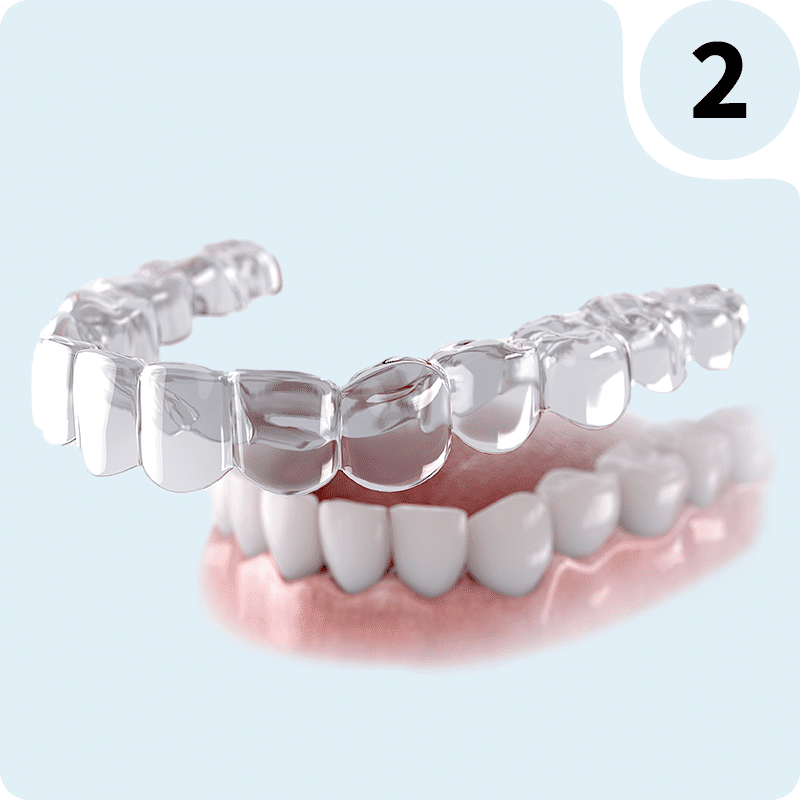
Insert and collect
At the second appointment, you will have the opportunity to pick up your customized grinding splint directly at our practice.
During this visit, the splint will be carefully adjusted to ensure that it fits perfectly and offers maximum comfort.
Our specialists will also explain to you how to use and care for the splint correctly.
Regular use of the grinding splint not only helps to reduce teeth grinding, but also protects your teeth from possible damage.
So you are ideally equipped to go through everyday life relaxed and pain-free.
Transparent occlusal splints from DR. HAGER
In our dental practice in Bietingen and dental practice in Konstanz, you can get modern, durable and transparent grinding splints. Arrange an appointment for an examination now.

Bruxism a parafunction such as biting the lips or biting fingernails
Parafunctions briefly explained:
Dentists classify bruxism, the grinding of teeth, as a parafunction.
Para means something like wrong or counter-rotating.
It is therefore a malfunction of the masticatory apparatus.
This parafunction is multifactorial, i.e. there are countless variables as to why it can occur.
Causes can be incorrect contacts, over-functioning of a masticatory muscle, differences between the right and left temporomandibular joint.
A common cause is the psychological variant.
Inner tension, stress at work or in the private sphere.
These habits also serve as an emotional relief valve.
Habits also fall under parafunctions.
Habits are habits such as thumb-sucking in children in late childhood, biting fingernails, chewing the inside of the cheeks or biting the lips.
What happens when you grind your teeth:
If only the mucous membrane is affected when biting the lips or cheeks, the chewing surfaces are truly abraded when grinding the teeth.
The tooth enamel, which is supposed to protect the tooth nerve from external influences such as cold, is worn away more and more.
This is particularly noticeable on the front and canine teeth.
As a result, the cusps are ground down in such a way that the upper and lower jaws slide back and forth as if on a slide track.
Many people not only grind their teeth at night during sleep, but also unconsciously press their jaws together with great force.
The chewing muscles are trained for a lifetime and develop immense strength.
Even the robust structure of the tooth cannot cope with this.
Cracks appear in the enamel and the teeth are even bent.
This bending force on the tooth causes individual parts of the tooth to come loose at the thinnest and most fragile parts.
These are the tooth necks.
They become thinner and thinner and can no longer protect the tooth from external influences such as cold.
This leads to very unpleasant pain.
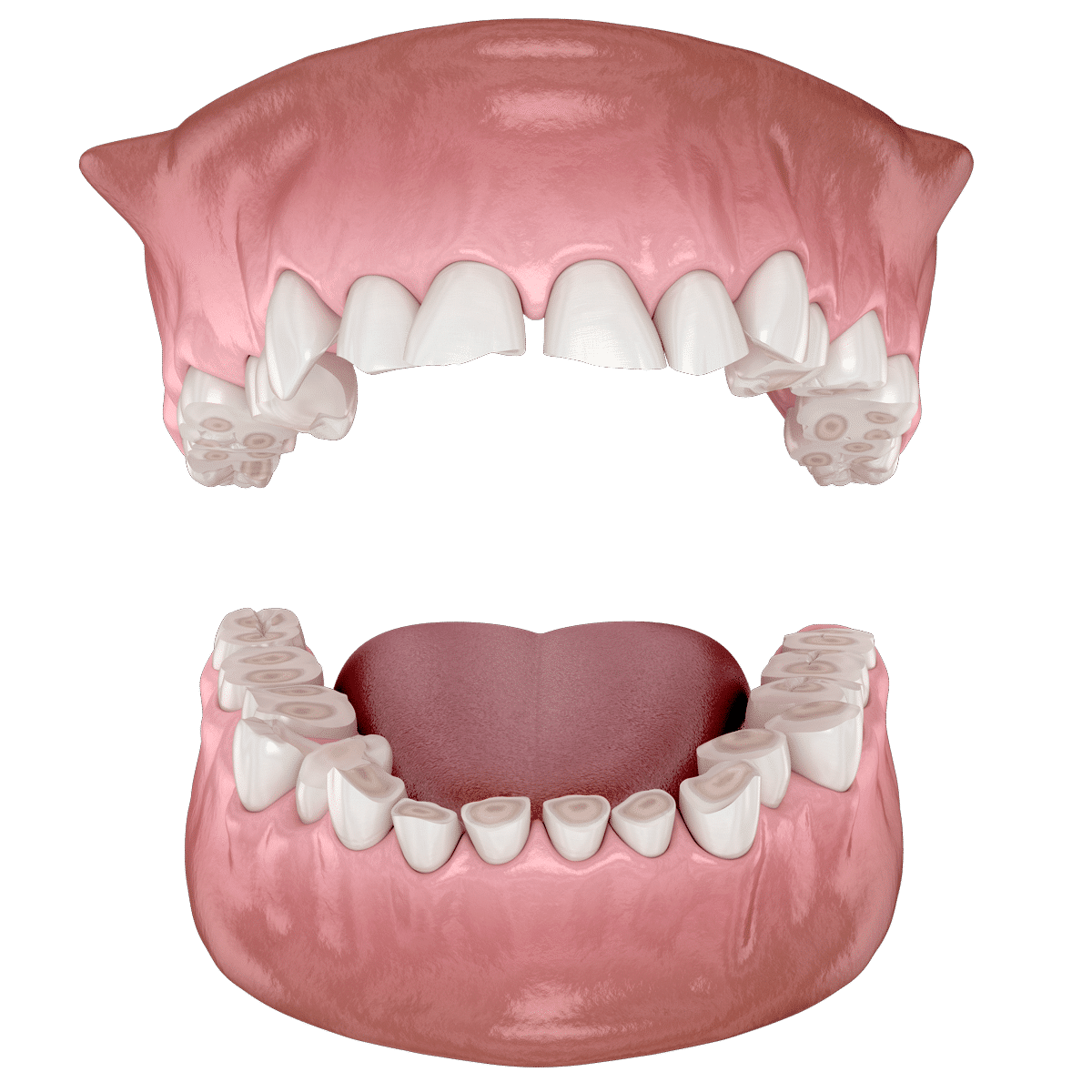
The constant rubbing and grinding can wear away the enamel surfaces, which can lead to increased sensitivity of the teeth.
Excessive pressure can lead to cracks or fractures in the teeth, especially in teeth that are already damaged or weak.
In severe cases, the bone and gums can recede, exposing the tooth necks and causing the teeth to loosen.
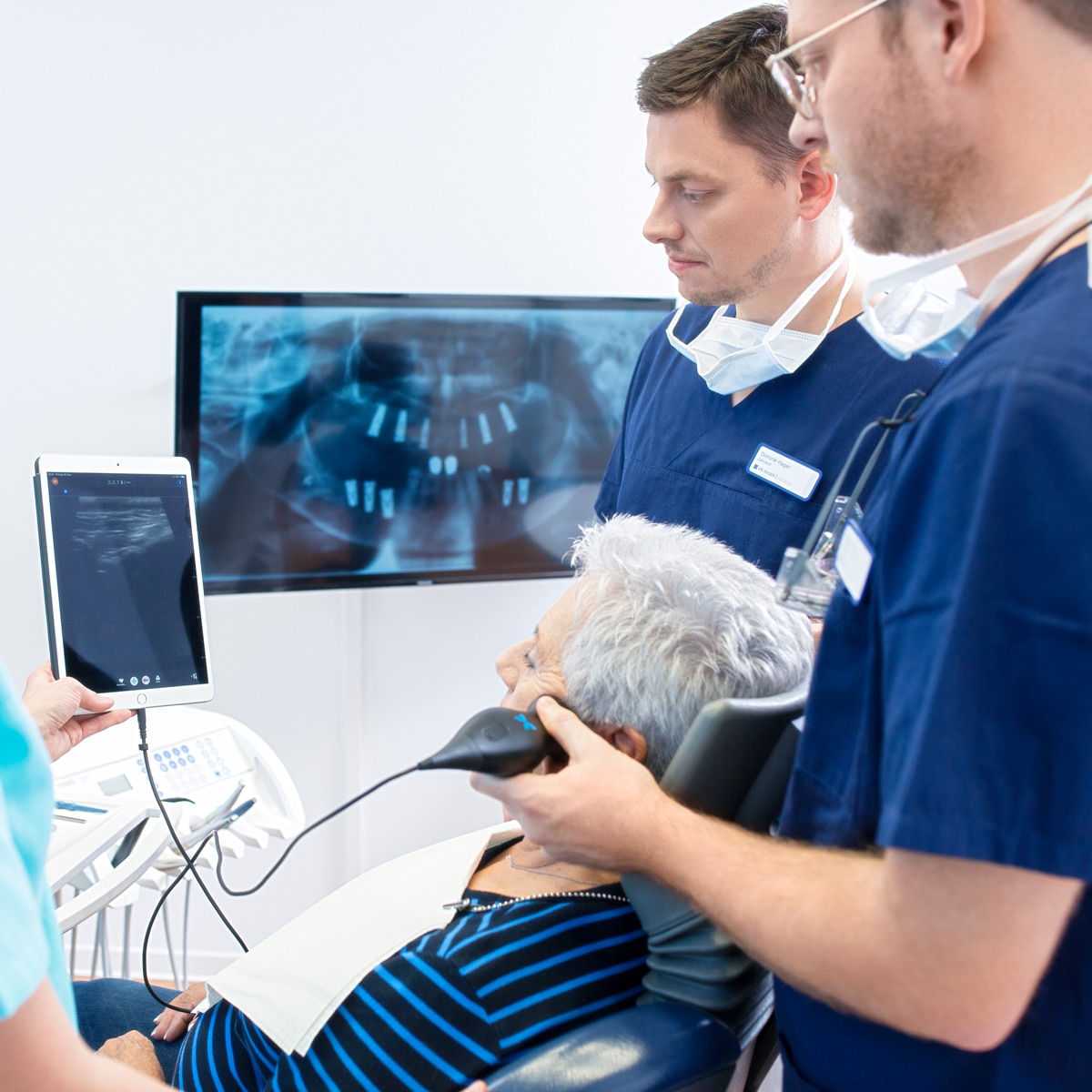
On the one hand, imaging techniques make it easy to recognize the diagnosis and, on the other, to explain the reasons to patients.
Teeth grinding is widespread in the western world and takes up a large proportion of our consultation topics.
For a reliable diagnosis, it is sufficient for patients to demonstrate the painting movements in order to be able to initiate the right individual therapy for our patients.
Unconscious teeth grinding not only damages the chewing surface or the tooth neck, but also the periodontium.
The periodontium is colloquially known as the tooth bed.
This is where the tooth is attached to the gums and jaw.
Pressing and grinding the teeth puts a lot of strain on the periodontium and can lead to loosening or inflammation.
Due to night-time teeth grinding, many patients also report morning muscle pain in the chewing area.
This can also lead to tense chewing muscles and head and neck pain.
Causes of teeth grinding
Causes of bruxism can be
- Overload
- Examinations
- Professional problems
- Private conflicts
- Bullying
- Financial problems
- Addictive substances such as nicotine or coffee
Night-time biting can be caused by many factors.
The medical profession then speaks of multifactorial causes.
The expression “you bite your way through” alone is an impressive indication of the problem.
Crooked teeth, uneven jaw joints or ill-fitting fillings are just a few examples.
Read more
According to study results, women between the ages of 30 and 50 are particularly frequently affected.
They are often more “electrified”.
An incorrect bite can develop over a longer period of time.
Here, night-time grinding, where great forces are exerted on the jaw by the masticatory muscles, is accompanied by particularly unpleasant consequences.
You then find yourself in a vicious circle in the truest sense of the word, where initial symptoms such as headaches develop and other muscle groups such as those in the neck, acute pain all over the body and even sleep apnoea syndrome can follow.
Unconscious grinding, usually during the night, is particularly evident in individual teeth with abraded chewing surfaces.

The muscle "Musculus Masseter" located here is the strongest human muscle and can lead to severe destruction of the teeth.

Therapy for teeth grinding: The grinding splint
The treatment of a bruxism patient usually begins with splint therapy.
Treatment with a splint is a purely symptomatic therapy.
This dental splint for bruxism therapy has many names in dentistry.
The splint is also called a relaxation splint, bruxer splint, bite splint or grinding splint.
It is made of plastic and has the functional purpose of relieving tension in the chewing muscles of those affected and at the same time preventing grinding from tooth to tooth.
The dental splint therefore has two bruxism therapy approaches:
I. Muscle relaxation
Firstly, the masticatory muscles are relaxed.
Chronic grinding overstrains the muscle groups in the head and neck area.
This begins with muscle soreness and, if the strain caused by bruxism continues, the fibers of the masticatory muscles change, leading to hardening and inflammation in the muscle area.
This overloading causes the temporomandibular joints to become inflamed in interaction with the muscles and eventually also become inflamed.
Occasionally, this can also cause the painful clicking of the jaw joint.
By keeping the space between the rows of teeth, the splint prevents the chewing muscles from contracting completely.
Complete contraction enables the masticatory muscle to build up its great strength.
The dental splint, which is up to 2 mm thick, therefore prevents maximum tension during sleep at night.
II Protection against abrasion of healthy teeth
On the other hand, the main purpose of the splint is of course to protect the cusps of the teeth from chewing surface wear.
Grinding movements over the canines and front teeth often reduce the teeth to such an extent that this is often considered aesthetically unpleasant.
To stop this process, a splint helps in the first instance.
If the patient also wants an aesthetic solution, veneers or crowns can be used.
If the posterior teeth are affected, ceramic inlays or crowns can help.

Dentists can recommend suitable measures, such as a bite splint, to protect the teeth and alleviate discomfort.
Production process of the crunch splint
The splint is similar to braces, except that the bite splint only covers the chewing surfaces of the teeth and does not touch the gums. The splint lasts a long time thanks to the so-called PMMA plastic.
The splint is usually made for the upper jaw. To do this, the dentist takes a digital impression after confirming the diagnosis. In the dental laboratory, the heated PMMA plastic plate is then pressed onto the impression using a vacuum press. The splint is then carved out of the plastic plate and the dental technicians finish the bite splint with polishing tools.
In a second appointment, the dentist inserts the finished grinding splint for fitting and, if necessary, grinds it down a little.
The patient should notice a noticeable improvement in the chewing apparatus within the first few days. The crunch splint should be worn every night.
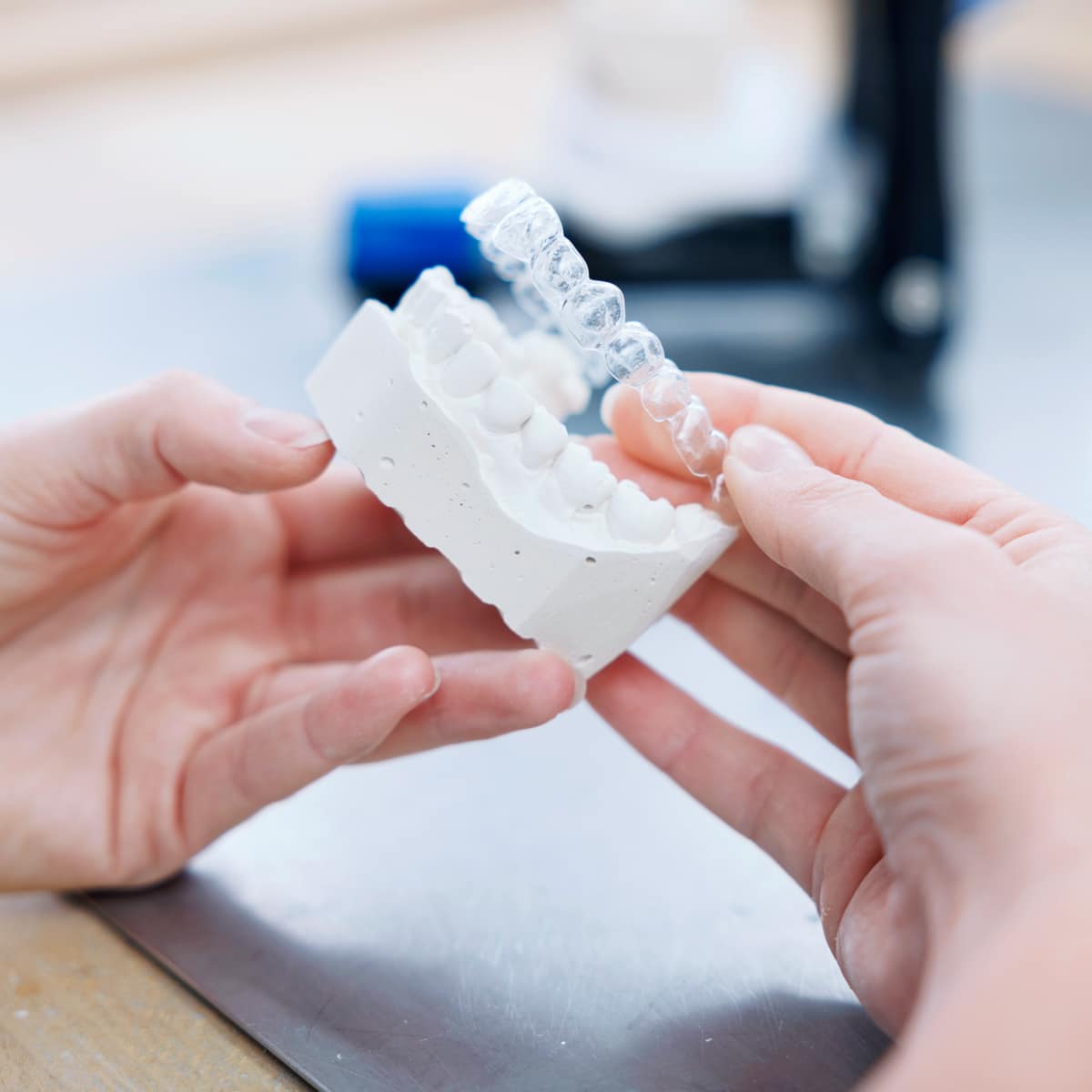
Dental advice
If you have any questions or would like advice about teeth grinding, we will be happy to help you personally. Visit us during our consultation hours in one of our two dental practices.

and the Dr. Hager team

FAQ Teeth grinding - bruxism
What is bruxism?
Bruxism causes increased activation of the chewing muscles, which is manifested by grinding and/or clenching of the jaws.
How do I notice that I grind my teeth at night?
If you grind or clench your teeth, this is called bruxism.
However, there is a difference between clenching and grinding.
Teeth grinding at night or during the day means that the rows of teeth grind back and forth over each other.
This means that the lower jaw is moved in all directions via the cusps.
This grinds down the cusp relief of the teeth, leaving behind grinding facets that are clearly visible to the dentist.
When clenching, on the other hand, the affected person clenches their teeth with pure muscle power without moving their jaw.
The muscles are severely overstrained and this is noticeable the next morning.
Symptoms include sore muscles, exposed tooth necks with sensitivity and severe tension in the mouth area.
Back and neck tension with headaches are also possible symptoms that people notice.
One possible treatment for this is the bite splint.
How do you treat bruxism/teeth grinding?
The teeth can be protected by special “grinding splints”.
These also distribute the pressure.
However, interactive therapies with e.g. physiotherapists or specialists are often necessary to get to the bottom of the cause.
Can grinding your teeth at night lead to headaches?
Yes, not only headaches are symptoms but also muscular tension in the entire head area up to the shoulders.
Pain can also occur in the teeth.
Here it is mostly the short bright pains caused by the exposed tooth necks.
Is tooth wear problematic in children?
No, many adults think that the abrasion of milk teeth is pathological.
This is not the case.
In the case of milk teeth in children, attrition is actually desirable.
The child adjusts the correct position and direction of growth of the lower jaw in relation to the upper jaw.
Abrasion is therefore necessary for the successful establishment of a healthy (eugnathic) bite with the following “real teeth”.
It is therefore not possible to speak of bruxism in children.
Why do you grind your teeth?
Various pre-existing conditions, misaligned teeth/jaws and stress can cause teeth grinding.
What happens if I do nothing to stop my teeth from grinding at night?
People process their psychological stress at night while they sleep.
In the truest sense of the word, the problems are chewed over again during the night.
The consequence of no treatment is that the extensive wear of the chewing surfaces can later lead to tooth corrections with dentures.
Jaw joint problems occur, the bite sinks – teeth are lost.
These symptoms are particularly common among people in the western world.
What to do about bruxism/teeth grinding pain?
For acute pain, painkillers and muscle relaxation exercises can often provide relief.
Is cracking of the temporomandibular joint dangerous?
Studies have shown that over 70% of people with audible clicking of the temporomandibular joint show no symptoms.
The cracking puts more strain on the joint cartilage, which can lead to problems later in life.
Incidentally, the cracking is not the bone but the joint fluid, which is caused by pressure differences when moving in the joint socket.

